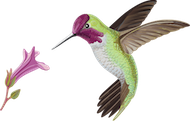



Study:
Citizen Science: Share Ichneumon, Braconid and Chalcid wasp observations to increase data collection and raise awareness about their ecological roles.
Conservation Biology: Understanding the status of Ichneumon, Braconid and Chalcid wasp populations in the Garden and developing strategies for their conservation.
Ecological Impact: Understanding the impact of Ichneumon, Braconid and Chalcid wasps on insect populations and the overall biodiversity within the Garden’s ecosystem.
Host-Parasite Interactions: Investigating which Ichneumon, Braconid and Chalcid wasp species are present in the Garden and discovering which insects are each wasp's host species, as well as observing the impact of parasitism on the host populations.
Beyond observing and photographing live Ichneumon, Braconid and Chalcid wasps, we are also collecting specimens. For the most part this is done by using a Malaise trap, which is moved periodically around the Garden. This tent-like structure collects flying insects by directing them upwards into a collection bottle containing a killing agent. Trapped wasps are then sorted, photographed, documented and preserved for possible further study.


Ichneumonidae are a diverse super-family of parasitic wasps (within the order Hymenoptera) and likely consists of over 100,000 species, many of which have not yet been described. Within this family are the Ichneumonid, Braconidae and Chalcidoid which are all primarily parasitic and host specific. They reproduce by laying their eggs on or within the larvae of other insects, particularly caterpillars. This specialized life cycle highlights their role as control agents, as they help regulate insect populations through their parasitic behavior.

